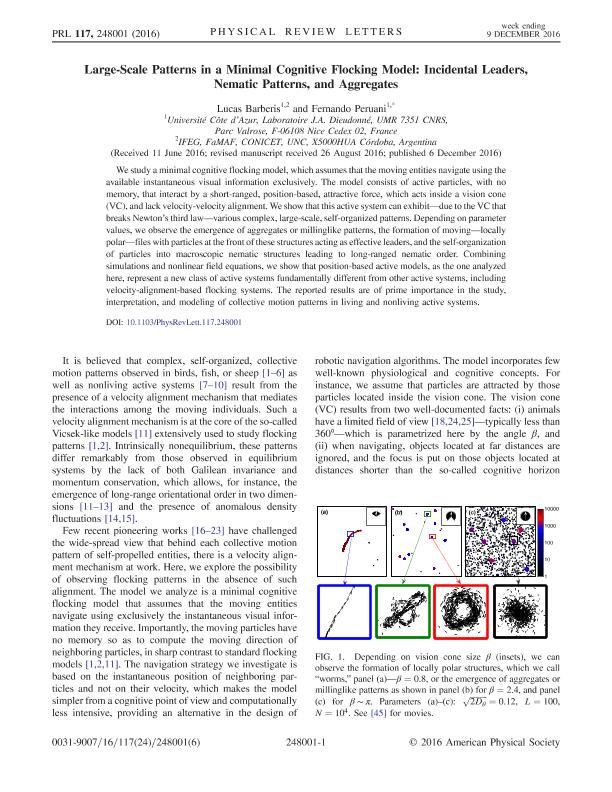Artículo
Large-Scale Patterns in a Minimal Cognitive Flocking Model: Incidental Leaders, Nematic Patterns, and Aggregates
Fecha de publicación:
12/2016
Editorial:
American Physical Society
Revista:
Physical Review Letters
ISSN:
0031-9007
Idioma:
Inglés
Tipo de recurso:
Artículo publicado
Clasificación temática:
Resumen
We study a minimal cognitive flocking model, which assumes that the moving entities navigate using the available instantaneous visual information exclusively. The model consists of active particles, with no memory, that interact by a short-ranged, position-based, attractive force, which acts inside a vision cone (VC), and lack velocity-velocity alignment. We show that this active system can exhibit - due to the VC that breaks Newton´s third law - various complex, large-scale, self-organized patterns. Depending on parameter values, we observe the emergence of aggregates or millinglike patterns, the formation of moving - locally polar - files with particles at the front of these structures acting as effective leaders, and the self-organization of particles into macroscopic nematic structures leading to long-ranged nematic order. Combining simulations and nonlinear field equations, we show that position-based active models, as the one analyzed here, represent a new class of active systems fundamentally different from other active systems, including velocity-alignment-based flocking systems. The reported results are of prime importance in the study, interpretation, and modeling of collective motion patterns in living and nonliving active systems.
Palabras clave:
Self-Prpelled Particles
,
Cognitive Horizon
,
Action Reaction Breacking
Archivos asociados
Licencia
Identificadores
Colecciones
Articulos(IFEG)
Articulos de INST.DE FISICA ENRIQUE GAVIOLA
Articulos de INST.DE FISICA ENRIQUE GAVIOLA
Citación
Barberis, Lucas Miguel; Peruani San Román, Fernando Miguel; Large-Scale Patterns in a Minimal Cognitive Flocking Model: Incidental Leaders, Nematic Patterns, and Aggregates; American Physical Society; Physical Review Letters; 117; 24; 12-2016; 1-6
Compartir
Altmétricas




